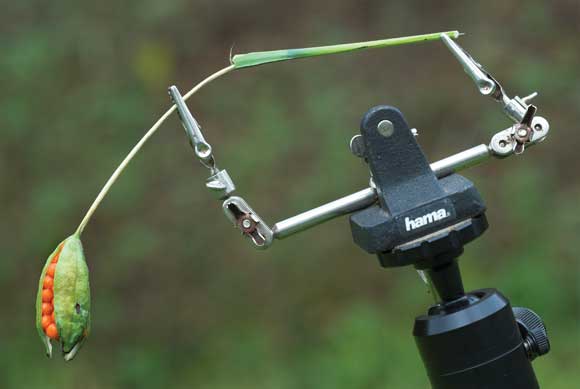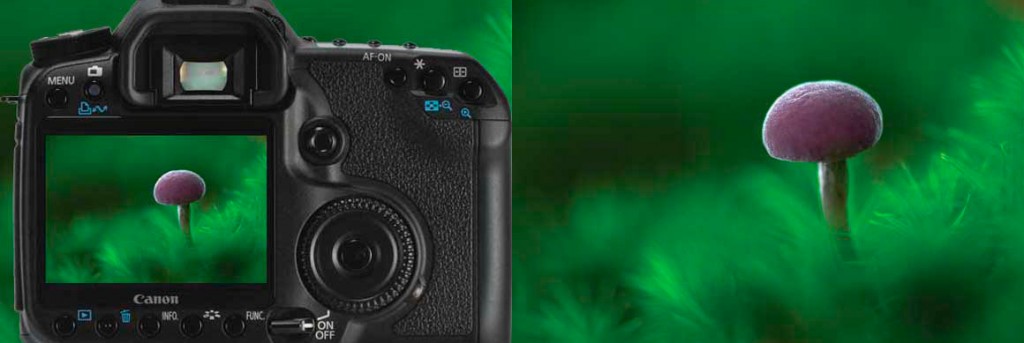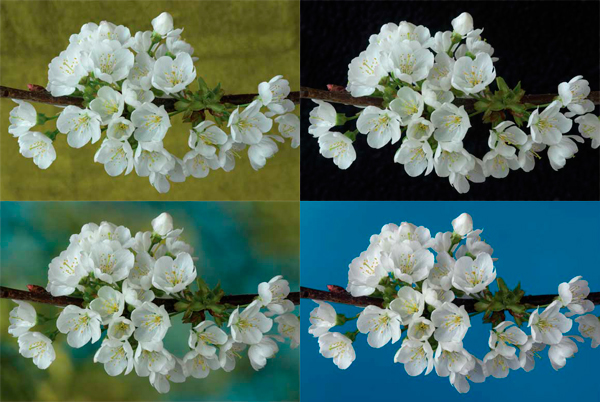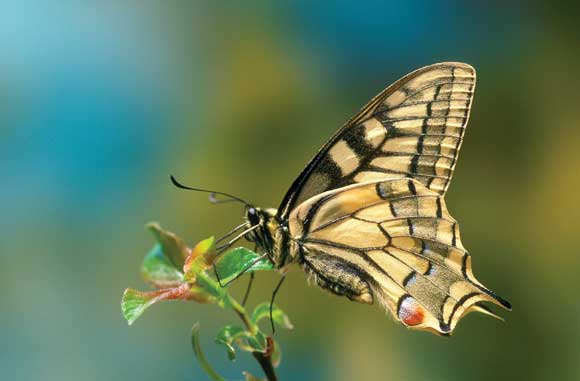Macro Photography Tips
Close-up macro photography is great for really bringing out the detail of your subject.
12 creative macro photography tips.
It may seem daunting at first, but macro photography really isn’t so different from other kinds once you get a graps of the basics. Pro photographer Colin Varndell offers his top 12 macro photography tips…
For more advice on shooting creepy-crawlies, have a read of our macro photography tips for shooting insects – or check out our main macro photography hub to learn even more.
1. Choose the Best Lens

Gatekeeper butterfly. Nikon D200, Nikon 200mm macro lens. 1/160sec @ f/8, ISO 100
The focal length of macro lenses ranges from 50mm to 200mm. Although many zoom lenses boast a macro setting, these are usually less than half life-size magnification – true macro, however, begins with 1:1 and nothing less.
A 50-60mm lens is suitable for general macro work but if you want greater subject-to-lens distance a 100mm lens will give you this at a price.
For creatures like butterflies and dragonflies, lens-to-subject distance becomes even more important so focal length needs to be greater.
The 150-200mm range is the most expensive, but you will appreciate the extra power when stalking flighty subjects like this Gatekeeper butterfly.
2. Make a Standard Zoom Focus Closer by Adding Tubes

Oedemera Nobilis. Nikon D200, Nikon 18-200mm lens with 20mm extension tube. 1/125sec @ f/11, ISO 400
Extension tubes fit between the rear mount of the lens and the camera body to make the lens focus closer and therefore produce a much bigger image of a small subject.
This image of a thick-legged flower beetle was shot with an 18-200mm zoom lens and a 20mm extension tube added. This is a much cheaper alternative than buying a macro lens but tubes are more fiddly to use in the field.
Also, with an extension tube fitted you lose the infinity end of your focusing range. Add more tubes and this becomes increasingly more limited.
3. Add a Dioptre to Make a Lens Focus Closer

Golden-ringed dragonfly. Panasonic Lumix FZ30 fitted with a Cokin +3 dioptre. 1/250sec @ f/3.6, ISO 200
Close-up filters are single-element lenses that look like magnifying glasses.
These filters screw into the front element thread and can provide an inexpensive alternative to splashing out on a pukka macro lens.
They come in a variety of strengths that are measured in dioptres.
Close-up filters are often available in sets of +1,+2 or +4 dioptre magnification.
Dioptres are also available to fit Cokin style square filter systems.
Add a dioptre to a bridge camera or a compact to achieve real close-up shots.
The golden ringed dragonfly shown here was shot on a Lumix FZ30 camera with a +3 dioptre added to the front element.
4. Use Apertures to Control Depth of Field

The left snowdrop shown here was shot at f/2.8 while the one on the right was taken at f/22
To get the most out of available depth of field, select a small aperture like f/16 or even f/22.
You will find that at half-life size the depth of field you can achieve at f/22 will be only around 15mm at best.
On the other hand you may wish to go to the other extreme and show as little sharpness as possible by opening up to full aperture like f/2.8 or f/4.
One advantage of the latter option is that any out-of-focus highlights will show as circle-like bubbles that can look very attractive.
5. Blend Flash with Ambient
With more static subjects it can be fun to add a blip of flash just to liven up an image.
In this composite shot of a sycamore leaf, both images were exposed for natural light; however, the bottom image was given a blip of off-camera fill-in flash and the shutter speed was increased by one stop in order to darken the background.

Sycamore leaf. Nikon D200, Nikon 105mm macro lens. 1/125 (top) & 1/250sec (bottom) @ f/8, ISO 100
6. Use a ‘Third Hand’

A ‘third hand’ device is an essential macro photography accessory. It will enable you to support or position subjects just where you want them. In turn, it can also help to provide endless possibilities of positioning backgrounds.
7. Fine-tune Macro Pattern Compositions

Fungi. Nikon D2X Nikon 105mm macro lens. 1/15sec @ f/11, ISO 100
Although we can crop things using software later, it is best to fine-tune composition in-camera at the time of shooting as much as possible.
With close-up pattern details, ensure they either fill the frame completely so that there are no gaps around the edges.
Alternatively show the entire pattern with space all around it.
These two shots of the same fungus illustrate how these opposite approaches look in practice
8. Point of Focus
It is imperative to consider the actual point of focus when working close-up with tiny subjects. You can dramatically change the appearance by where you chose to focus.
These two shots of the same teasle head were both shot at the same maximum aperture, but the point of focus was changed by a couple of millimetres to produce an entirely different effect.

Teasle head. Nikon D200, Sigma 150mm macro lens. 1/320sec @ f/5.6, ISO 100
9. Check LCD Panel
Use your rear LCD facility to ensure you have got the shot you want before moving on. Look carefully at the corners to make sure there are no intrusions.
Tidy up any unwanted debris in the scene and make sure that your composition concentrates on your subject as intended. It’s also wise to carry a spare battery, as constantly reviewing shots will drain power.

Amethyst Deceiver. Nikon D200, Sigma 150mm lens. 1/13sec @ f/4.2, ISO 100
10. Raindrops

Raindrops on geranium leaf. Nikon D200, Sigma 150mm lens, 1/20sec @ f/16 @ 1/20, ISO 100.
After rain can be an excellent time to search for macro subjects when everything is dripping with droplets of rain water.
Go in close to show how the raindrops act as miniature lenses, magnifying the veins in leaves.
11. Backgrounds
Add different coloured backgrounds to macro shots to change the look of the subject.
These four backgrounds were all natural subjects but shot deliberately out of focus. Grass was used, and tree foliage and a combination of bushes and sky.
They were printed to A3 on matt paper so there was less risk of reflection when placed behind the subject, especially if a mirror or flashgun was to be used to expose the image.

White Cherry Blossom. Nikon D200, Nikon 105mm macro lens. 1/10sec @ f/11, ISO 200
12. Butterflies
Swallowtail butterfly. Nikon D200, Nikon 105mm macro lens. 1/8sec @ f/2.8, ISO 200
With small but lively subjects like butterflies, it can be difficult getting close enough to them for frame-filling shots.
Try stalking them later in the day, just as they are about to settle down for the night.
source: amateurphotographer

Comments
Post a Comment